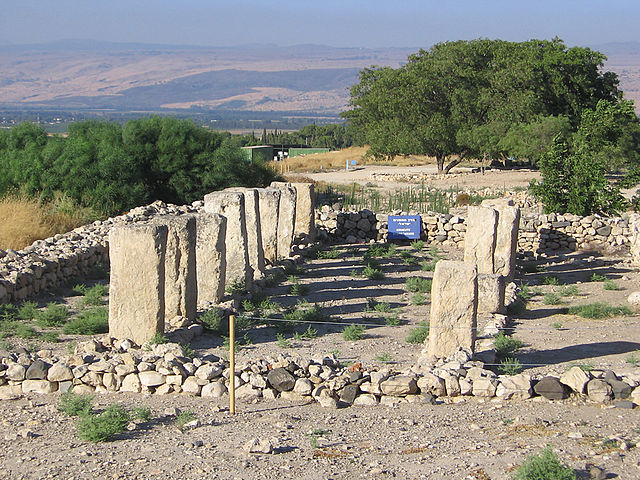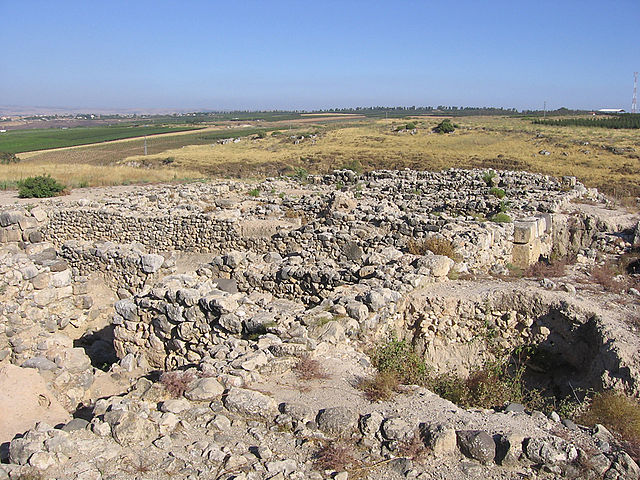Tel Hazor, also Chatsôr, translated in LXX as Hasōr, named in Arabic Tell Waqqas / Tell Qedah el-Gul, is an archaeological tell at the site of ancient Hazor, located in Israel, Upper Galilee, north of the Sea of Galilee, in the northern Korazim Plateau. From the Middle Bronze Age to the Iron Age, Hazor was the largest fortified city in the region and one of the most important in the Fertile Crescent. It maintained commercial ties with Babylon and Syria, and imported large quantities of tin for the bronze industry. In the Book of Joshua, Hazor is described as "the head of all those kingdoms". Though scholars largely do not consider the Book of Joshua to be historically accurate, archaeological excavations have emphasized the city's importance.
House of Pillars at Hazor
Royal fortress gate found at Hazor, now in the Israel Museum
Archaeological remains at Hazor
Amarna letter. A letter from Abdi-Tirshi (King of Hazor) to the Egyptian Pharaoh Amenhotep III or his son Akhenaten. 14th century BCE. From Tell el-Amarna, Egypt. The British Museum
The Korazim Plateau, is a volcanic plateau, located in northern Israel. The plateau is bounded between by the Hula Valley in the north, Sea of Galilee in the south, the mountains of the Galilee to the west and by the Jordan River to the east. It is named after an ancient Jewish settlement also known as "Chorazin". The highest point is Filon Hill, which is 409 meters above sea level.
Mahanayim River valley





